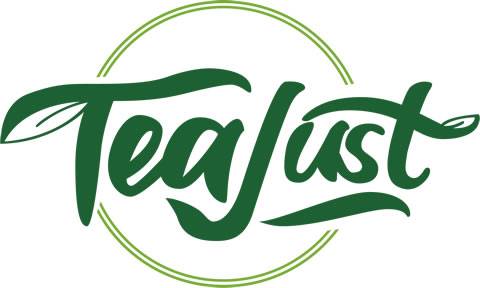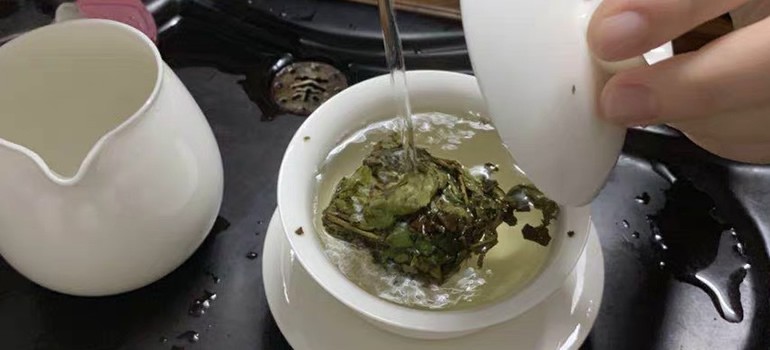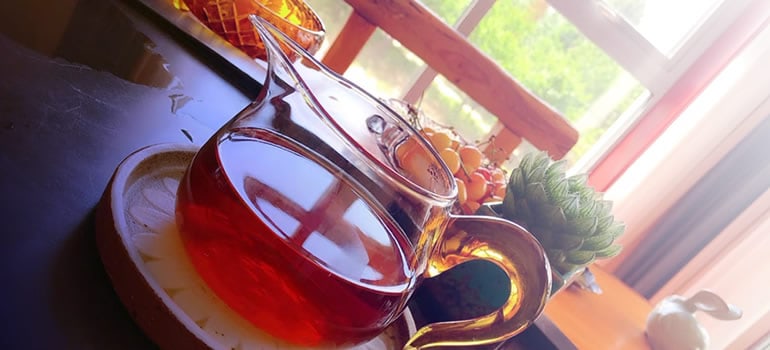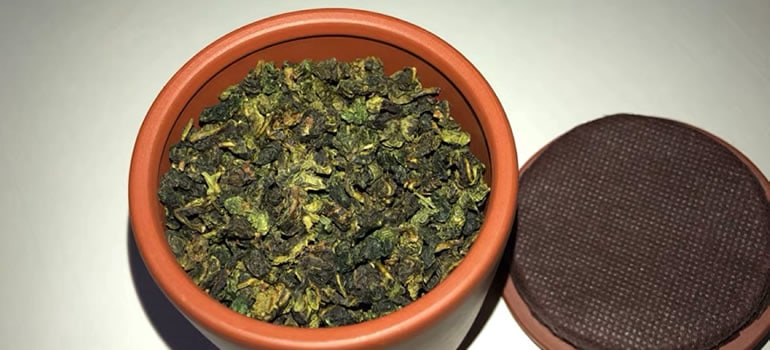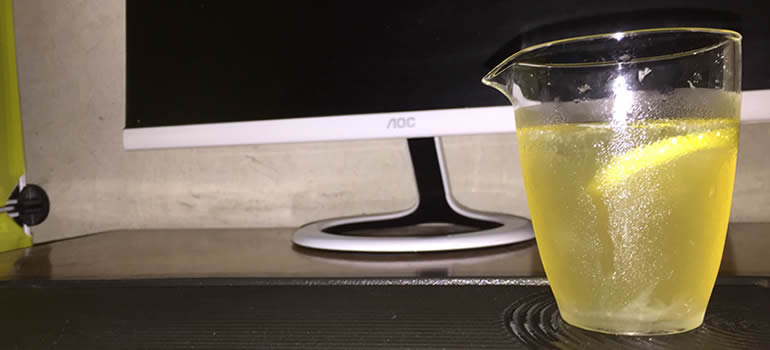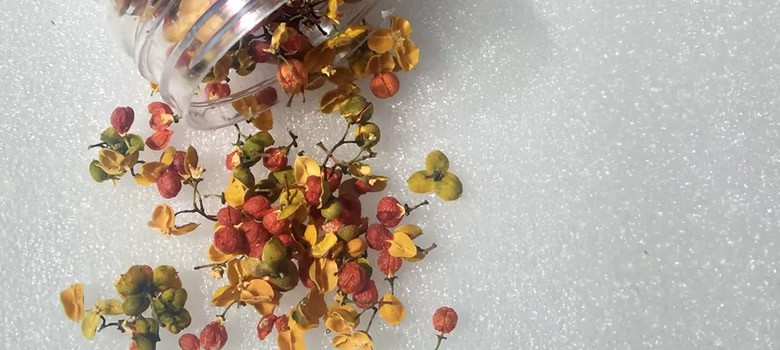
Herbal teas, also known as tisanes, have been consumed for thousands of years.
There is nothing better than treating yourself with a nice, flavorsome cup made from fresh herbs. It is a treat for both the body and the mind. The health benefits of herbal teas have been well known in the past, and they find applications even today.
But tea does not have to come from the local store.
Here’s the thing.
Have you ever wondered if it is possible to prepare your very own herbal tea, without relying on the local grocery store?
People have been growing plants for thousands of years, so one must be able to grow their own herbs as well. Right?
However, if you have never done that before, you can easily get overwhelmed by so many questions. Which herbs? What do they need to grow? And what are you supposed to do with them once they grow?
To these questions and many more, you will find the answers below.
Read on. In this article, I share with you everything you need to know about growing and making your very own tea from herbs.
Can You Make Tea From Fresh Herbs?
One of the questions that I most often get asked is, “Does tea actually require the plant to be dried?” We all have been drinking teas prepared from dried leaves and flowers for so long that using fresh ones seems so strange for some reason, doesn’t it?
The simple answer is no. You do not need the plant material to be dried, baked, or processed in any way to prepare one flavorful and high-quality tea. The oils found within the herbs are responsible for the flavor of the tea, and they can be found in fresh herbs too.
The commercially sold dried herbs have always had an off and kind of stale taste to me.
Maybe it is the drying process that dulls the taste somewhat. Or the fact that the herbs may have been staying on the shelf for quite some time. Or maybe it is an acquired taste.
Fresh herbal teas, since they are prepared from freshly harvested herbs, have a very bright and refreshing taste that is accompanied by a mellow and more delicate aroma.
But why then do we use dried tea leaves, flowers, and herbs to prepare tea?
During the baking and drying processes, the herb’s leaves and flowers usually go through some partial cell breakdown or degradation. This makes the herbs more readily release the flavors, oils, and the different chemical compounds they contain.
Extracting the more delicate flavors, aroma, and nutrients from a dried herb is thus easier. In general, preparing tea with dried herbs will have a stronger and punchier taste.
I am sure you have heard how the human body is about 60% water. Plants are comprised of even more water – between 90% to 95%. This is why when we use dried herbs, we need less substance. During the drying process, all that water is evaporated. And we end up with a very tiny substance that has all the flavors and oils concentrated in it.
Fresh herbs will have all that water in them. You can kind of consider them a more diluted version of their dried counterparts. Hence why you will need, what to the eye appears as, more leaves and flowers to achieve a similar effect.
Also, using dried herbs is more convenient and easy. Fresh herbs will start to wilt and degrade faster. They can even oxidize and spoil under certain conditions. In comparison, drying herbs makes it easier to store, sell, and gives them a longer shelf life.
How to Make the Switch From Dried to Fresh Herbs?
Since growing your own herbs at home is a pretty big step, I recommend you to borrow or buy freshly harvested herbs from a friend or a local shop in the beginning.
Make yourself a few teas. Mix different herbs into a tea blend. Let your imagination go wild and just experiment with the different tastes and flavors.
That way, you will be able to see what you enjoy. You might even find that you do not like the taste and flavor of fresh herbs. Or you may discover that you immensely enjoy one or two particular herbs.
You may wonder why I am saying this. Well, the reason is that preparing tea with fresh herbs is well worth your while. The problem is that it takes some time and preparation.
By knowing what kind of herbs you want to grow and drink, you will eliminate a lot of potential problems. Read on. Below I explain more.
How to Make Tea From Fresh Herbs
In order to prepare tea from fresh herbs, you will need to follow several different steps. Depending on your personal preferences, where you live, and access to fresh herbs, not all of these steps may apply to you.
What you will find out at the end is that making tea with real and fresh herbs is easier than you expect.
Step #1: Grow Your Herbs
Preparing tea from fresh herbs involves you having access to freshly grown and harvested herbs in the first place.
This may or may not deter a lot of tea drinkers. But stay with me for a moment. If you are really serious about it, you can easily start growing your very own herbs at home.
You do not necessarily need a large backyard or even a backyard for that matter. Herbs can be grown indoors as well.
Growing Herbs in Your Backyard
The most natural way to grow herbs for tea is by planting them in your backyard.
An essential factor to consider before setting on growing herbs in your backyard is going to be the weather conditions where you live.
The U.S., for example, is divided into 11 different USDA hardiness zones. And certain herbs can grow only in certain zones.
These zones represent different temperatures and climate conditions. The hardiness of 1 represents a zone where the climate is very cold, while the hardiness of 11 is a zone where the weather is very hot and humid.
Later in this article, I share with you some of the most popular herbs that you can grow for tea and their hardiness levels.
This does not mean you cannot grow different herbs, only that you may not be able to keep them out in the open throughout the whole year.
So make sure to double-check the optimal weather conditions and hardiness of the herbs before planting them. You do not want to plant a herb in your garden only to find that you will have to dig it up in the winter.
The next thing to consider is sunlight. This may vary from herb to herb, but the majority of them will thrive best when getting about 4 to 6 hours of sunshine per day.
The soil is also important. Make sure that the plants are grown in well-drained soil that is frequently watered. Additionally, enriching the soil with a little bit of a nutritious fertilizer or compost will do wonders for your herbs.
How to Grow Herbs in Pots
The herbs of your choice can also be planted and grown in pots. This allows you easily to bring them indoors when necessary.
If you live in an apartment, this may be one of the ways to grow your very own herbs. However, you will need several things like:
- Pots;
- Potting soil;
- Fertilizer;
- Seeds or plant cuttings;
Make sure to use quality potting soil that drains well. Use fertilizers to enrich the soil, and do not forget to water the herbs frequently.
Some herbs may require a different watering schedule, so be careful not to overdo it.
How to Grow Herbs in Water
Certain herbs can be grown indoors in water.
Lemon balm, mint, rosemary, thyme, basil, oregano, and sage can all be rooted in water by taking a new green stem from a mature plant that has not yet started to flower.
To grow herbs in water, you will need just a few simple things:
- Plant stem;
- Scissors
- Glass mug;
- Water;
Make sure that your scissors (or knife) are clean before use. Using dirty tools can introduce disease to the plant. If the scissors need cleaning, use soapy water and some alcohol for disinfection.
Take a few 4 to 6 inches long, cutting from a healthy herb plant that has not yet started to flower. The reason for this is that you want the plant to direct its energy at creating roots and not flowers. At least not yet.
Cut the stem at an angle starting right under the points where the leaves grow on the stem.
Snip off the leaves that are lower on the stem. You do not want them to be submerged underwater as they will rot.
Place the freshly cut stem in a glass of water in a place where there is plenty of sunlight and airflow.
It usually takes between 7 to 14 days for the roots to start growing. Make sure to change the water in the glass every 2 to 3 days in order to keep it free from contaminants.
Alternatively, if you have a good old friend growing herbs, you can always try to persuade them to give you a few freshly cut stems.
Step #2: Harvest the Desired Quantities of the Fresh Herbs
Wait for the herb to grow at least 6″ or 8″ tall before harvesting it.
When the plant matures, harvest the fresh leaves, flowers, or parts of the herbs that you intend to use.
Make sure not to cut or remove more than 1/3 of the plant or the leaves at any time, and after harvesting, give the plant enough time to recover.
When cutting entire branches, make sure again to cut about no more than 1/3 of the branch. The cut ideally should be at an angle near an intersection where the leaves grow.
Before using the harvested leaves, make sure to wash them thoroughly and let them drain for a few hours.
Step #3 Prepare Your Fresh Herb Tea
There are two main ways you can prepare your cup of tea. The first way is through drying or baking your fresh herbs, and the second is by using the fresh herbs directly.
Preparing Tea With Fresh Dried Herbs
The first way is to have the herbs dried in an oven or dehydrator. If you are using an oven, preheat it at the lowest temperature. Spread the herbs in a baking tray and place them in the oven. You can also leave the oven door slightly open in order to promote better airflow – this will speed up the drying process.
Keep an eye on the herbs. When ready, take them out of the oven and leave them to cool down.
The time you keep the herbs in the oven will affect their flavor and taste qualities. The longer they have been kept in the oven, the smokier the flavor. Make sure to experiment with different timings according to your taste.
Next, crumble the leaves and have them go through a sieve to reduce the amount of tea dust as much as possible.
Now you have freshly harvested and dried leaves that you can make your tea with.
Alternatively, you can also use the fresh herbs as is after they have been harvested and washed. This means that no drying or roasting processes will be involved.
For freshly roasted and dried herbs, use about one teaspoon or 4 to 5 grams per standard cup of tea. Place the herbs inside a teapot pour in some boiling water and let the tea steep for 2 to 5 minutes.
Alternatively, you can also brew them in the teapot.
It is best to brew and steep herbal tea at temperatures between 208°F to 212°F (97°C to 100°C). The ideal brewing temperature may differ between the different herbs.
Certain herbs can be brewed at higher temperatures up to 212°F like chamomile, rose hips, mint, rosemary, and thyme, while others like the lemon balm, for example, should be brewed at lower temperatures like 180°F.
You may have to adjust the number of herbs, water temperature, and steeping time according to your personal taste and preferences.
When you are ready, just use a strainer to remove the herbs, and you are good to go. You can also use a tea infuser to make the steeping process easier.
Preparing Tea With Fresh Herbs
Making tea with fresh herbs requires a larger amount of herbs. Usually, about 15 to 20 grams or about 1/2 to 1/4 of the cup.
Place the fresh herbs in a pot, add boiling water, cover the teapot, and let the herbs steep for 5 to 15 minutes.
The brewing and steeping temperatures for fresh herbal teas are going to be similar about 208°F to 212°F (or 97°C to 100°C).
In some instances, the fresh herbs can be steeped for up to an hour. Generally speaking, the longer they steep, the more potent and stronger the tea will be. In this case, I recommend covering the tea with a lid and, when ready, reheating it again if needed.
I also recommend chopping the fresh herbs into smaller pieces. This will promote better infusion and release of the nutrients, oils, and flavors. You can just add them to the teapot and later strain the tea or let them steep by using a diffuser. Either way works great, and it will be up to your personal preferences.
Generally speaking, fresh home-grown herbs (and freshly dried herbs) should be relatively safe. However, generally speaking, they should be brewed at boiling temperatures for a while because this helps to sterilize the tea. This is recommended, especially when the herbal tea is used for its medicinal properties by people that are sick.
Also, you can always play around and combine different fresh herbs to create your own tea blends and discover new and exciting flavors.
What Fresh Herbs You Can Use to Make Tea?
The amazing thing is that there is a wide variety of different herbs that you can grow and use.
Below I share with you a list, which is by no means comprehensive, of some of the best and most widely used herbs.
Chamomile
Chamomile has a very delicate floral and warm flavor with mellow honey-like after taste. It is good for anxiety, sleeplessness, and digestive problems.
Chamomile is a perennial plant that can be grown in USDA zones 3 to 9.
Lavender
With its complex warm earthy and floral flavor, lavender tea is the perfect tea for starting the day off on the right foot. Lavender is good for improving sleep, headaches, stress, and anxiety.
Lavender is a relatively small perennial shrub (or a woody plant), growing up to about 24 inches tall. It is suitable for USDA zones 5 to 9.
Mint
Mint tea has a strong refreshing flavor with a very distinct and punchy cooling sensation. It is good for stomach aches, headaches, and more.
Mint is considered a perennial herb, and it is very easy to grow and care for. Mint can be grown in USDA zones 4 to 9.
Lemongrass
Lemongrass has a mellow flavor that is reminiscent of lemons. However, the flavor is very delicate and sweet. It is good for relieving stress, anxiety, bloating, lowering cholesterol, and more.
Lemongrass is perennial. However, it is susceptible to cold temperatures and should be kept indoors during the winter. It can be grown in USDA zones 9 to 10.
Lemon Verbena
Lemon verbena has a slight citrus feel to it. It is suitable for improving digestion, flu symptoms, sleeplessness, and more.
The lemon verbena is a perennial, shrub-like plant. However, it can be grown as an annual in colder climates if kept indoors. It is best suitable for USDA zones 9 to 10.
Lemon-Scented Geranium
This is another herb that has a mild lemon-flavor and aroma. Combining the lemon verbena with the geranium and lemongrass can make for a fantastic citrus-reminiscent trio. The lemon verbena has relaxing and stress-relieving properties.
The lemon-scented geranium is a perennial plant that grows in hardiness zones of 10 to 11.
Thyme
Thyme has a full-bodied, earthy flavor and slight mint aftertaste. It has powerful antibacterial and antimicrobial properties.
Thyme is a woody perennial herb that can be grown in USDA zones 2 to 5.
Basil
Basil has a strong aroma and delicate pungent, warm flavor with slight floral undertones. It helps digestion and improves focus. It is also well-known for its strong stress and anxiety-relieving properties.
Basil is a perennial herb that grows in USDA zones 10 to 11.
Sage
Sage has a very distinct bitter and slightly minty flavor. This is why it is frequently combined with other herbs. It is suitable for flu and cold symptoms. It also promotes better brain, skin, and oral health.
Sage is a perennial plant that grows in hardiness zones 5 to 8.
Oregano
Oregano has a slightly bitter taste to it. It can be used during the flu season, and it has strong antifungal and anti-inflammatory properties.
Oregano is a bit more delicate plant and grows best in hardiness zone 5.
Rosemary
Rosemary has a strong woody flavor and aroma reminiscent of pines. It has mellow undertones of mint and citrus. It is useful for improving digestion, memory, blood sugar levels, and more.
Rosemary is a perennial plant that should be kept away from the cold. It can be grown in USDA zones 9 to 13.
Fennel
Fennel has a strong aroma, which is combined with a slightly bitter and licorice-like flavor. It is used to promote better digestion, reduce bloating, and alleviate stomach ache.
Fennel can be grown as a perennial or annual plant. It grows best in USDA zones 6 to 10.
Ginger
Ginger, often considered as a spice and a herb, has a unique, vibrant warm, and spicy flavor. Ginger has a beneficial effect on morning sickness and nausea. It alleviates muscle and menstrual pain.
It can be grown in hardiness zones 7 and above.
Linden
Not all herbs that you can use for preparing a cup of tea look alike. For example, the flowers and leaves of linden (one of my favorite teas, by the way) have been used for tea for many years.
Linden is a tree. And trees, pretty much look after themselves. All you have to do is harvest the flowers when the time is ready. Linden trees grow in USDA zones 3 to 8.
Linden has a strong, full-bodied, warm taste to it and slightly sweet floral notes. It is suitable for anxiety, cold and flu symptoms, difficulty sleeping, and more.
What Are the Advantages of Making Tea With Fresh Herbs
It Is a Healthier Alternative
Commercially sold herbs can be treated with various pesticides, hazardous chemicals, and even exposed to radiation.
This not only results in herbs that have lowered medicinal properties, but they can also be hazardous to one’s health.
Growing and tending your own herbs can eliminate all that.
Your fresh herbal tea will be more potent and with better medicinal properties.
You will know precisely what the herbs contain and have been treated with. Just make sure to use non-GMO, organic herbs, and seeds that have not been treated with any chemicals or pesticides.
You Can Harvest Your Herbs Frequently.
One of the neat advantages of growing your own herbs is that they can be harvested frequently. This means that you can not only drink fresh and healthy all-natural tea but do it often too.
Some people may be worried that by harvesting their herbs too early or too frequently, this will damage the plant. However, most often than not, the result will be quite the opposite.
Frequent harvesting will not only mean more fresh herbs for your tea but also promote the plant to grow and produce more foliage.
Herbs Are Easy to Grow
It may seem like herbs require a lot of work, but that is not the case. They are a lot easier to grow compared to many houseplants.
What they need is good access to sunlight, protection against the cold weather, some fertilizer for nutrition, water, and pots big enough to accommodate them.
For beginners that do not have a lot of experience, mint, rosemary, thyme, and basil may be one of the best herbs to start with. Especially mint, which grows like crazy!
It Is Affordable
Growing herbs in your home are very cheap and cost-effective. You can buy hundreds if not thousands of seeds for a very modest price. There are also entire herb-growing kits that are literally a steal.
Herbs can save you money on condiments and spices.
Growing Herbs in Your Home Is Good for You
The health benefits of the herbs extend far beyond tea preparation. In fact, just by having a few indoor plants, you can improve the air quality in your home.
Basil, rosemary, and parsley are a few herbs that are well-known for their air-purifying qualities.
